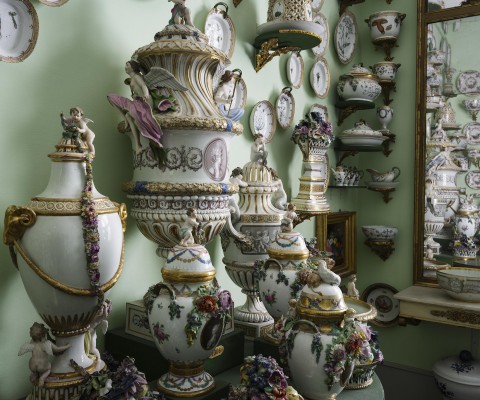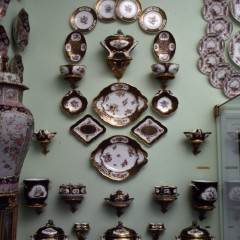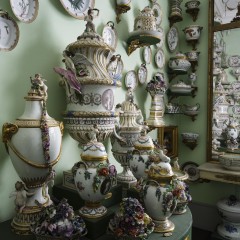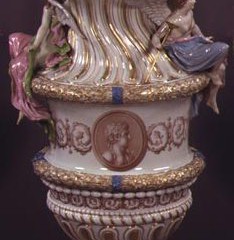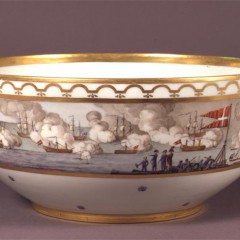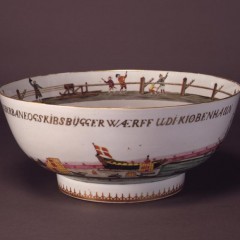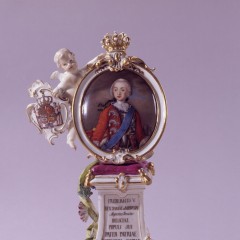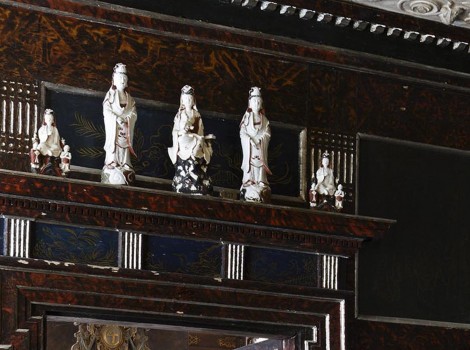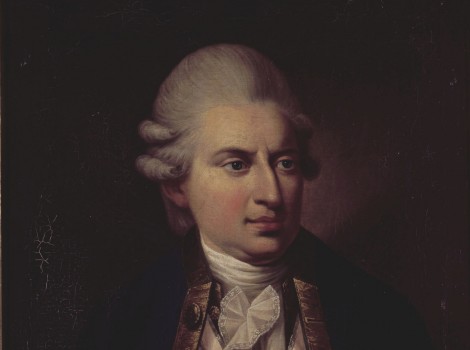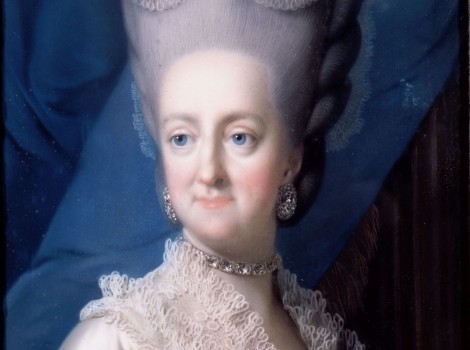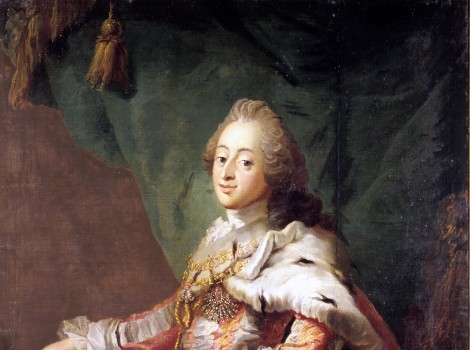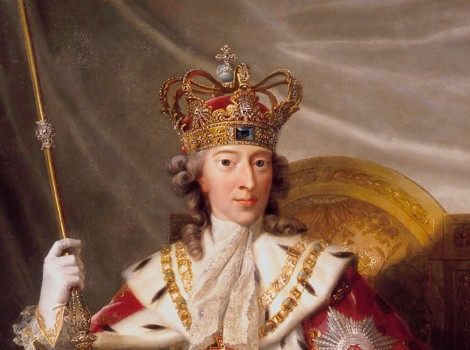23 The Porcelain Cabinet (closed)
The Porcelain Cabinet is closed
This room is closed as the Flora Danica porcelain is currently exhibited at Koldinghus: Flora Danica at Koldinghus
About The Porcelain Cabinet
ROOM 23: Frederik IV planned to have a porcelain cabinet to form a counterpart to the Glass Cabinet. Such cabinets became fashionable at princely courts in Europe by the end of the 17th century. Frederik visited the porcelain cabinet at Charlottenburg Palace in Berlin on the way home from his Italian journey in 1709. That became the inspiration for the Glass Cabinet, but for unknown reasons, the plans for a porcelain cabinet in Rosenborg was never realized.
The present interior dates from c. 1860. Some of the Royal Houses’ finest porcelain items are displayed here. The collection includes several examples of Meissen china from the first part of the 18th century, Sèvres porcelain and Chinese porcelain.
An large part of the collection is made up from items from the Royal Copenhagen Porcelain Manufactory, most importantly the famous Flora Danica set. According to tradition, it was commisioned as a gift for Catherine the Great of Russia, but she died before the set was completed.

 Dansk
Dansk
 English
English
 Deutsch
Deutsch



